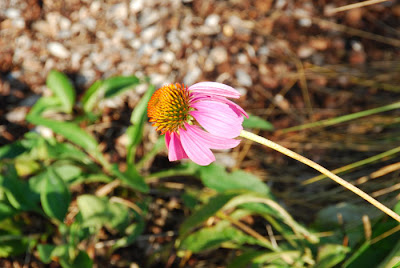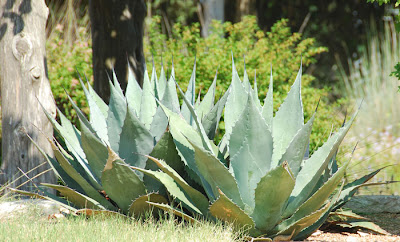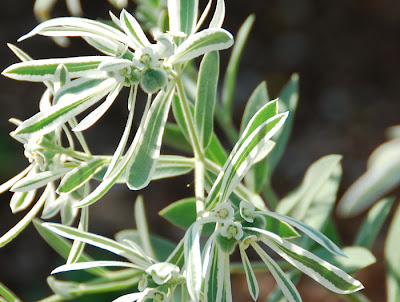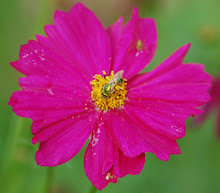
Normally, I am a hand-tool kind of gal. Yikes, that sounds a little racy. How about, normally I'm a double digger? I like digging in the dirt. I like running the soil through my hands, breaking up clods. I became a gardener after spading and forking my back 50 feet into a producing vegetable garden.
So, it was hard for me to admit defeat, but with a shrinking
gardening WOO (window of opportunity); a new bed composed of what can only be described as rock; and a
dog who wasn't performing up to expectations, I rented my first tiller. The Honda mid-tine tiller.
The dog didn't give up her job without a fight. She blocked the tiller's path. I now call her Luddite.

I safety geared up. I did not realize until I was uploading this picture that the glove is flipping me off. I guess it had a better idea of what I lie ahead than I did. I should have taken heed.

The salesperson at the big box store talked me out of the smaller tiller and tried to get me to rent the big boy, but I went middle of the road. I mean, if I could dig three inches in the new bed with my muscles, shouldn't a medium-sized tiller work miracles?

It didn't.

My rock-, glass-, and nail-filled yard did not magically transform into beautiful loam with one pass of the big gun.
The truth is much dirtier, as I was I, from head to toe. Unlike
Bonnie, I will not post a picture of me tilling. I do have proof of my work but even without scratch-and-sniff Internet, the sweat stains would disgust you and that is definitely not a photo in
its prime.
The tiller uncovered more broken glass, rusty nails, and rocks than I had found previously in the whole yard--and I had already filled a large trashcan full. After each pass, I raked the debris out of the way to allow the tiller blades to sink farther in. At first, I picked up each piece of glass and metal. After one hour, I decided to only pick up glass at least one inch by one inch and nails longer than two inches.
Nevertheless, my four-hour rental quickly rolled into a 24-hour rental.
My work was also not without collateral damage.

The other bed I decided to prepare was a bit easier to till. When I told my husband I was going to title this post "A Tale of Two Beds," he asked if the first line would be "It was the best of beds; it was the worst of beds." Not exactly.

The "best" of beds was not without its problems, most notably the Pipe to Nowhere.

A few years ago we found water pooling in the area of the new bed. Our neighbor happened to have a plumber working at her house so we asked him to take a look. He thought that the city's water line was backing up into our yard so he suggested we call the city first, as the city would have to pay if the problem was its pipe.
A city guy showed up--on a Sunday afternoon no less-- and couldn't figure it out. Our water lines drain to the lines in the front of our house, not the rear. He called some colleagues, and the next thing I knew five city workers were congregating in our backyard marveling over the Pipe to Nowhere. They all wanted to know what the pipe was doing and where it was connected, but after checking old files, they couldn't figure it out.
They all thought it was pretty cool but left without doing anything.
They guessed that we could take the pipe out without any problem. Key word: guessed. So the pipe stayed there until yesterday. With help from a tiller, a fork, a spade, a husband, and a dog, I removed 10 feet of the pipe.

So far, so good. We'll see what happens if Hurricane Ike brings us a lot of rain.

The "best" bed is on the left, the "worst" bed is on the right. For the "best" bed, I think I can get away with just adding more compost, but for the "worst" bed I am going to have to add some actual soil.
Stay tuned for planting: an herb and vegetable bed, maybe with some pretty perennials thrown in will fill the "best" bed; the "worst" bed gets less sun than I previously thought so it will get a mix of part-shade perennials.
























































